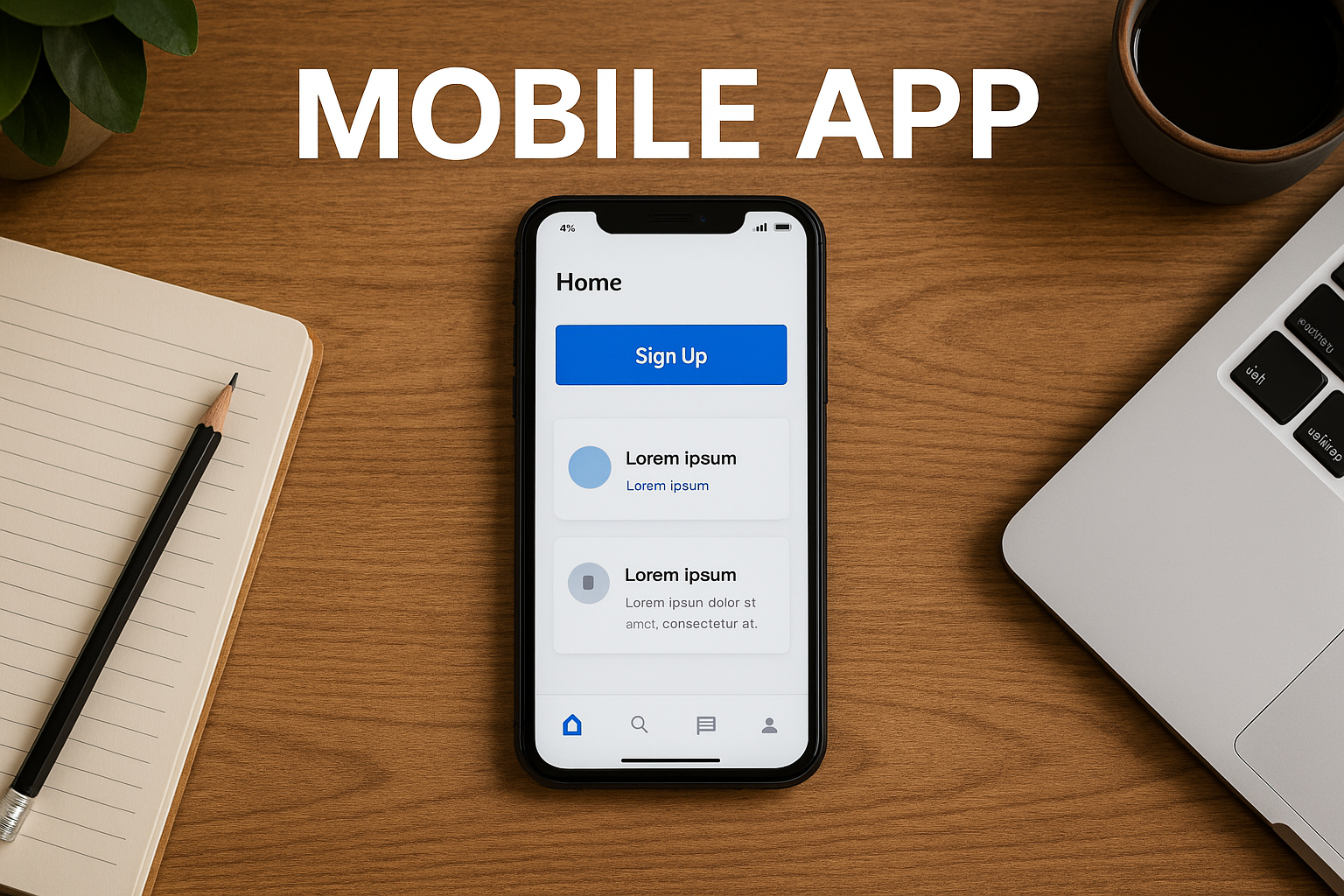Did you know that approximately 20% of app updates result in negative user reviews immediately following the release? In the fast-paced digital landscape, launching updates to your mobile application can feel like walking a tightrope. A successful update translates to user satisfaction, feature enhancement, and renewed engagement, but a flawed launch? Well, that’s a cascade of negative reviews, user churn, and potential damage to your brand’s reputation.
The key isn’t just how you update, but how strategically you prepare, especially within the context of Mobile App Development USA. Navigating the intricacies of app updates requires meticulous planning and astute decision-making, crucial for businesses operating in the Mobile App Development USA market. This comprehensive guide unveils five crucial steps you must consider before pushing that update button, particularly when serving users in the Mobile App Development USA region.
By internalizing these best practices, you can transform your update process from a potential pitfall into a powerful springboard for growth within the Mobile App Development USA landscape. Let’s ensure your next mobile app update elevates, rather than eviscerates, the user experience for your Mobile App Development USA users.
1. Strategic Considerations Before Updating Your Mobile Application
Before diving into the specifics of code, testing, and deployment, a foundational layer of strategic thought is absolutely necessary. Neglecting this initial phase often leads to mismatched expectations, inefficient resource allocation, and, ultimately, a suboptimal update experience. These strategic decisions underpin the entire process and determine the direction and scope of the update.
Defining the “Why”: Articulating Your Update’s Objectives
Too often, updates are launched without a clearly defined rationale. Are you fixing critical bugs? Introducing game-changing features? Preparing for the adoption of new platform SDKs or protocols? Before any coding begins, you mustarticulate the primary drivers for the update. Consider using the S.M.A.R.T. criteria:
- Specific: What precise outcome do you expect?
- Measurable: How will you assess success? What are the key performance indicators (KPIs)?
- Achievable: Is the goal realistic, given your resources and timeframe?
- Relevant: How does the update align with your broader business objectives and user needs?
- Time-Bound: What is the defined deadline?
Having this clarity shapes every subsequent decision, from feature prioritization to testing protocols. Don’t update simply because you can. Update because it directly benefits your users and your business goals. If there’s no valid purpose in that time avoid it and think another possible action or decision to give your users a solution.
Risk Assessment: Mitigating Potential Pitfalls
Every software update introduces a degree of risk. Compatibility issues, unexpected bugs, performance degradation, and even security vulnerabilities can arise. A robust risk assessment helps identify and mitigate these potential downsides. Consider conducting a comprehensive review of the existing application architecture, focusing on areas prone to instability or those heavily reliant on external dependencies. Create a prioritized list of potential failure points and outline contingency plans for each.
Here’s a simple table outlining common risks and corresponding mitigation strategies:
| Risk | Mitigation Strategy |
|---|---|
| :———————– | :———————————————————————— |
| Compatibility Issues | Thorough testing across multiple devices and operating system versions. |
| Data Loss/Corruption | Robust backup and recovery procedures; transaction-safe database operations. |
| Security Vulnerabilities | Conduct thorough penetration testing and code review to identify vulnerabilities. |
| Performance Degradation | Code profiling, performance monitoring, and optimization of inefficient code segments. |
| Third-Party Dependencies Failures | Implement redundancy for critical dependencies. Ensure backward compatibility with old features. |
This proactive approach minimizes the likelihood of unforeseen issues derailing the update.
2. User-Centric Development: Integrating Feedback and Refining Features
The best apps are those developed in tandem with users. Before committing to significant changes, gather user feedback and ensure the proposed features truly address their needs. This iterative approach allows for course correction and minimizes the risk of investing time and resources in unwanted additions.
Prioritizing User Feedback: Listen to Your Audience
User feedback can be gleaned through a variety of channels: app store reviews, beta testing programs, social media monitoring, and direct surveys. Analyze this data to identify recurring pain points, feature requests, and areas for improvement. It’s a rich resource if utilized properly and objectively.
Categorize user feedback and create a matrix ranking issues by impact and frequency. Prioritize fixes and features that address the most pressing concerns affecting the broadest user base. In doing so, you create a product in tandem with user input. It is the truest means of understanding pain points, so use it accordingly.
Alpha and Beta Testing: Gaining Real-World Insights
Before launching to the wider public, subjecting your update to alpha and beta testing can expose overlooked bugs and usability issues.
- Alpha testing: Involves internal team members using the app in a controlled environment. It’s primarily focused on identifying critical bugs and ensuring core functionality is stable.
- Beta testing: Expands the testing pool to a select group of external users who provide feedback in a real-world setting. It helps uncover usability problems, compatibility issues, and performance bottlenecks.
These are the perfect instances to engage with customers as individuals rather than a group of users, fostering more engagement and potentially higher rates of response to requests to perform Alpha and Beta tests.
“It is only by bridging the gap between theory and practice that meaningful innovation can occur.” – An italicized expert quote that strengthens your point.
3. Technical Preparations: Streamlining Code and Infrastructure
With a well-defined update strategy and user feedback integrated, the focus shifts to the technical aspects of code modification, database updates, and infrastructure adjustments. These preparations can make or break an update, requiring planning and care.
Optimizing Code for Performance: Clean, Efficient, Scalable
Ensure your codebase is clean, efficient, and well-documented before releasing a mobile app update. Unnecessary code bloat can contribute to sluggish performance, increased battery drain, and app size increases. Conduct thorough code profiling to identify performance bottlenecks and refactor inefficient sections.
Address legacy code, deprecated functions, or libraries and ensure all third-party dependencies are compatible with the latest platform SDKs. This ensures that your app remains performant across all relevant device segments. In general, having this awareness is a great indication for how to prepare a solid development practice and set expectations for standards with all those who are involved in the update.
Managing Database Migrations: Preserving Data Integrity
Any update that alters the database schema carries the risk of data loss or corruption. Implement robust database migration strategies that preserve data integrity and prevent downtime. Back up your data ahead of time, prepare appropriate instructions, and monitor these migrations. Consider the following steps:
1. Back up the existing database.
2. Develop and test migration scripts in a staging environment.
3. Implement versioning to ensure that database changes can be rolled back if necessary.
4. Monitor database performance during and after the migration.
Data loss is catastrophic. You’d likely encounter far worse reviews that are centered on features that may have issues due to the update. Always prepare to retrieve data and be as minimally invasive as possible with any data structures or data entries with these migration plans.
4. Post-Update Monitoring and Refinement: Ensuring Continued Success
The launch of the update marks the end of one phase and the beginning of another. Ongoing monitoring and refinement are essential for addressing unforeseen issues, optimizing performance, and continuously improving the user experience. You always need to be prepared.
Monitoring App Performance: Tracking KPIs and Addressing Issues
Track key performance indicators (KPIs) like app crash rates, load times, user engagement metrics, and resource usage. Monitor user feedback in app store reviews and social media channels, immediately responding to reports of bugs or issues. Set up automated alerts to notify you of abnormal performance patterns or increases in negative feedback. Doing so allows your team to immediately resolve issues to minimize any negative repercussions of your updates. The better the metrics, the faster issues are revealed, allowing for a swifter response.
“Continual improvement is better than delayed perfection.” – Another impactful italicized quote.
| Variation | Change | KPI | Results | Action |
|---|---|---|---|---|
| :———— | :————————————— | :—————— | :———————————- | :——————————— |
| Control | Original checkout flow. | Conversion Rate | 3.2% Conversion Rate | Analyze Data and Conduct Interviews |
| Variation A | Simplified one-page checkout form. | Conversion Rate | 4.8% Conversion Rate | Collect feedback for further enhancement |
| Variation B | Guest checkout without registration. | Abandonment Rate | Reduced abandonment by 15% | Full rollout of improved features |
Data drives this iterative refinement cycle, resulting in improved usability and user satisfaction. Remember, your goal isn’t only to address issues after you encounter them. Rather, to set up mechanisms to always strive to provide better experience for your user groups.
Key Takeaways:
- Always define clear objectives for each update using S.M.A.R.T goals to measure success.
- Prioritize user feedback to refine your app in direct response to what users care about.
- Ensure that all the processes in place is scalable with code-optimization and database practices, with backups.
- Use A/B to improve functionality or features with feedback on various scenarios to drive ROI.
- Continuously check your app performances by tracking KPIs, addressing bugs, and analyzing user-engagement.
Frequently Asked Questions
What’s a critical initial step before making a mobile app update?
Begin by clearly outlining the purpose of the update, like specific goals and benefits.
How crucial is gathering user input before updating a mobile app?
It’s important, helping the creation of app modifications meet user demands.
Why should a dev thoroughly test their update app before launching it fully?
Testing finds overlooked issues that reduce quality and reliability when live for customers.
Explain a crucial step that’s part of making sure you don’t experience data lose.
Develop proper backups and use reliable migration tactics to safeguard information when there are changes.
In your opinion, why keep monitoring key markers and gather reviews for app health?
Appraisal tracks real functionality, spots early faults, and drives improvements for an amazing user journey.
Recommendations: Steer Towards Improvement
Updating mobile applications should be seamless and rewarding. Following these five critical areas helps. In addition, to further boost user happiness and growth, focus also on keeping app update practices robust through thorough reviews, user driven improvement, and continuous checks. By including this thorough method, you’re ensuring more seamless updates to get positive engagement over negative ones.
Remember to consistently request the user’s input using notifications inside the platform, which can give them access to Beta-Program enrollment that promotes strong development cycles with solid collaboration! Now is the time to plan accordingly, build confidently, and make every version release matter! Share and remark for conversations about mobile application optimization to guide better updates.

